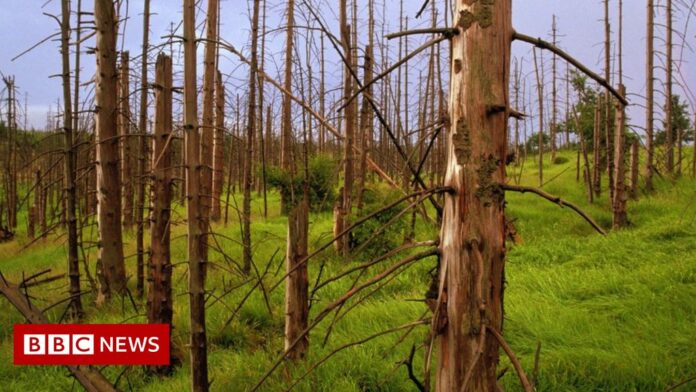There are no simple solutions to complex problems like climate change. But there have been times in the past when the world has come together to try to fix an environmental crisis.
How did we deal with acid rain, for example, or the hole in the ozone layer? And are there lessons for tackling the bigger issue of global warming?
It’s the 1980s, and fish are disappearing in rivers across Scandinavia. Trees in parts of the forests are stripped bare of leaves, and in North America some lakes are so devoid of life their waters turn an eerie translucent blue.
The cause: Clouds of sulphur dioxide from coal-burning power plants are travelling long distances in the air and falling back to Earth in the form of acidic rain.
“In the ’80s, essentially the message was that this was the largest environmental problem of all time,” says Peringe Grennfelt, a Swedish scientist who played a key role in highlighting the dangers of acid rain.


